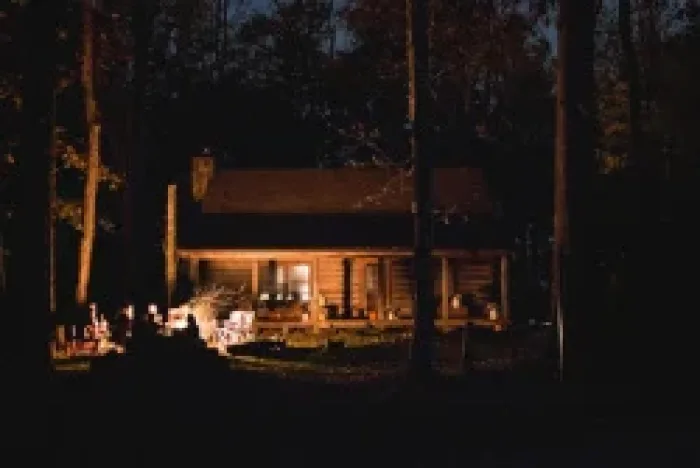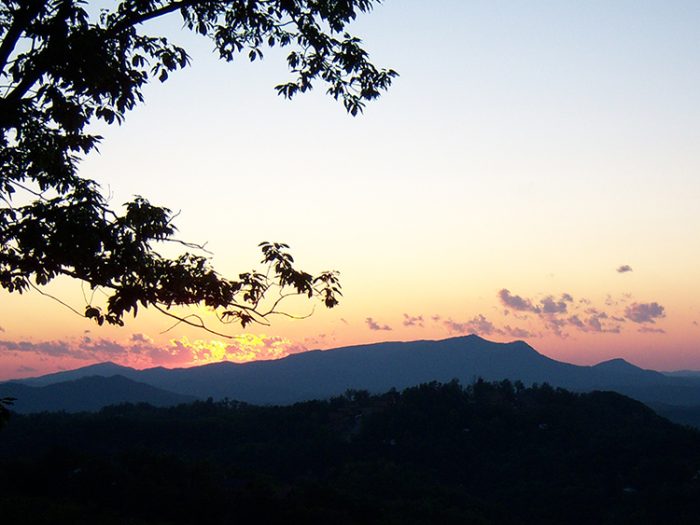 When I woke in the morning, snow still dusted the mountains in the distance. I stretched and yawned in my cozy fox den, and decided that today would be a good day to check out the annual Wilderness Wildlife Week in Pigeon Forge.
When I woke in the morning, snow still dusted the mountains in the distance. I stretched and yawned in my cozy fox den, and decided that today would be a good day to check out the annual Wilderness Wildlife Week in Pigeon Forge.
As a native of of the Smoky Mountains, it's not like I really needed to go to understand the comings and goings of the forest. I was, however, interested in unraveling the mysteries of the many humans that visit my home every year (9 million annually to be exact).
Foxes, you see, have really short lives - you're looking at 5 years on average and 14 if you're the Methuselah of foxes. That being said, I'd like to think it's this short life that gives us that youthful prance in our step. However, as I learned from my day at Le Conte Center, humans have been in the Smoky Mountain area for 10,000 years and have created a unique culture filled with music, stories, and crafts.
I also heard a clever scholar named Dr. William Bass was going to be there, and foxes appreciate those whose mental cunning matches theirs.
So, I scurried over to the LeConte Center bearing my Wilderness Wildlife Week schedule and steno pad in paw. There was so much to do that I knew I had a busy day of learning ahead of me between 9:30 AM to 7:30 PM when Dr. Bass was to speak.
Appalachian Culture at Wilderness Wildlife Week
I'd arrived with some time to kill before my first class so I decided to look around the vendors in the LeConte Exhibit Hall. One of the first vendors I stopped to talk to was Sherry Mummert. Sherry was busy weaving when I spotted some pretty woven bookmarks (perfect for my book collection) and started chatting with her. I'd seen her work at the Cliff Dwellers Gallery when I did my tour of the Glades Arts and Crafts Community back in the fall. I learned that Sherry had 20 years of weaving experience and a total of 5 looms at her house!
 Sherry offered for me to try my paws at the loom. So I naturally accepted. The loom itself is not difficult to operate - simply press the right pedal to lift up the thread, weave your thread under in the right direction, and the give a firm thud with beater and repeat. Sherry said setting the loom up is a different process entirely.
Sherry offered for me to try my paws at the loom. So I naturally accepted. The loom itself is not difficult to operate - simply press the right pedal to lift up the thread, weave your thread under in the right direction, and the give a firm thud with beater and repeat. Sherry said setting the loom up is a different process entirely.
The exhibit hall also had displays of quilts and photographs on competition as well as a Cades Cove museum with artifacts and photos from the settlers who lived in the area, which included a pulpit from one of the churches, clothes, shoes, and musical instruments.
While heading out to make it to my first class, I ran into my old friend Dave Ogle from Ogle's Broom Shop. He thanked me for taking an interest in his families' over 90 year tradition of broom making and invited me to take a class with him that day where he'd teach me the family secrets of broom making.
I headed to my first class about the inhabitants of Cades Cove. The presentation mainly focused on the European settlers who called this ideal spot of land in the Smokies home. Prior to the creation of the park, 700-800 people lived in this middle-class mountain community. Most residents of Cades Cove socialized at the churches in the surrounding area or at the Cable Grist Mill, which still stands today. I found it interesting that, unlike the preserved cabins that currently stand in the park, many of the houses present in the area immediately before the creation of the park were quite modern. One even had it's own washing machine that used a gas operated motor since Cades Cove never had electricity.
Appalachian Music and Dance
 After this presentation, I headed back to LeConte Hall to here the Carolina Bluegrass Boys play some good ole mountain bluegrass. I was enjoying tapping my paws to the rhythm and laughing at the lead singer's jokes, but one of the older cloggers took quite a liking to me (I am quite the vixen, after all) and I scampered off to get some lunch.
After this presentation, I headed back to LeConte Hall to here the Carolina Bluegrass Boys play some good ole mountain bluegrass. I was enjoying tapping my paws to the rhythm and laughing at the lead singer's jokes, but one of the older cloggers took quite a liking to me (I am quite the vixen, after all) and I scampered off to get some lunch.
Sly Fox Tip: I wouldn't recommend lunch at the LeConte Center. The prices are quite steep and the selection is quite slim. I was sorely disappointed that there were no chicken or eggs. However, the center shares a parking lot with the Island so you can walk or drive to the selection of restaurants there.
Appalachian Culture Part II:
Ogle Brooms, The Old Mill, Cherokee, and More
After a quick lunch, I went to my broom workshop with Dave Ogle. We were making small decorative hand brooms that his mom used to make for Christmas gifts for the women at church. Since many Appalachian residents were poor, they used what had. For the Ogle's that was broom corn. They even used leftover broom corn from the hand brooms for cake testers.
You don't need much to make a broom. Just broom corn, some thread, a needle, and wooden spreader tool. I had to have Dave help me with several parts of the process. Having to make do without thumbs was a bit of a challenge, but even the humans were complaining about needing a third hand.

With my new broom in hand, I headed off to hear about The Old Mill district's fascinating history. Chuck Childer, the current miller explained the history of the most photographed mill in America. The Old Mill has been a post office, housed a general store, provided electricity, and survived countless floods. Fascinating enough, the mill as it stands today, with the exception of some siding, roofing, and flooring, is the exact same building that served as the center of town in 1830.
 I left The Old Mill presentation early to learn a little bit more about the Cherokee - whose ancestors first settled here 10,000 years ago from Jon Elder, a man with roots in both the European settlers and the Cherokee.
I left The Old Mill presentation early to learn a little bit more about the Cherokee - whose ancestors first settled here 10,000 years ago from Jon Elder, a man with roots in both the European settlers and the Cherokee.
According to Cherokee legend, in the beginning, all the animals lived in the land beyond the rainbow and below was only water, but it got overcrowded. The Raven and Turtledove couldn't find land, but the water dove deep under water and picked up sand, which he brought up. Then, Grandfather Buzzard flew over the mountains giving East Tennessee's its mountains and valleys.
I was disappointed there were no foxes involved, but Jon assured me that foxes show up in Cherokee legend often as clever tricksters.
I was quite the tired fox at this point, but I went on to two more talks. Dr. Gail Palmer discussed how graves tell stories in the Smokies. I learned about a bizarre fellow by the name of Edd Conner - a undertaker who anticipated his death a little too early after a stroke, made a stylish coffin, and held a "funeral" where he sat on his coffin and talked about his life (He had an actual funeral 4 years later). I also learned of a John "Chicken Eater" Tipton, who clearly had a refined palate judging by his nickname.
Ron Rader talked about simpler times in the Pigeon Forge of his boyhood. Instead of hotels, attractions, and endless cabins in Pigeon Forge, there was peaceful farmland. I couldn't help but think what it would be like to have all those farms to roam - and all the chicken coups.
The Infamous Dr. Bass and the Body Farm
Luckily I had a chance to relax and collect my thoughts before Dr. Bass gave his talk. For those not-so-clever foxes out there, Dr. Bass is world famous for the infamous Body Farm and his groundbreaking research into how bodies decay. During his informative (and delightfully humorous) presentation he talked about how blowfly life cycles, dental patterns, and more can indicate how long someone has been dead with some pictures that made me want to cover my eyes with my paws.
For an hour and a half, he discussed how the body farm came to be in 1971, how there are thousands skeletons under Neyland Stadium, and how, in the heat of an East Tennessee summer, it takes only 14 days for a body to go from corpse to skeleton. His mixture of facts and humorous stories (Like that one time he left a body in the janitor's closet over a weekend...) made for an unforgettable presentation and I even had the chance to meet him afterwards.
 Final Thoughts on Wilderness Wildlife Week
Final Thoughts on Wilderness Wildlife Week
All in all, my day at Wilderness Wildlife Week offered interesting insights into the people of these rolling hills I call home. From unique individuals to entire cultures, this history of these hills is outstanding. While it was certainly a long day, I left with more than enough information for 3 blog posts!
You can still learn about East Tennessee history, culture, and wildlife until this Saturday, January 31. Wilderness Wildlife Week will be held in May of next year, allowing for more fun programs in the park.
Written by Moxie Fox










